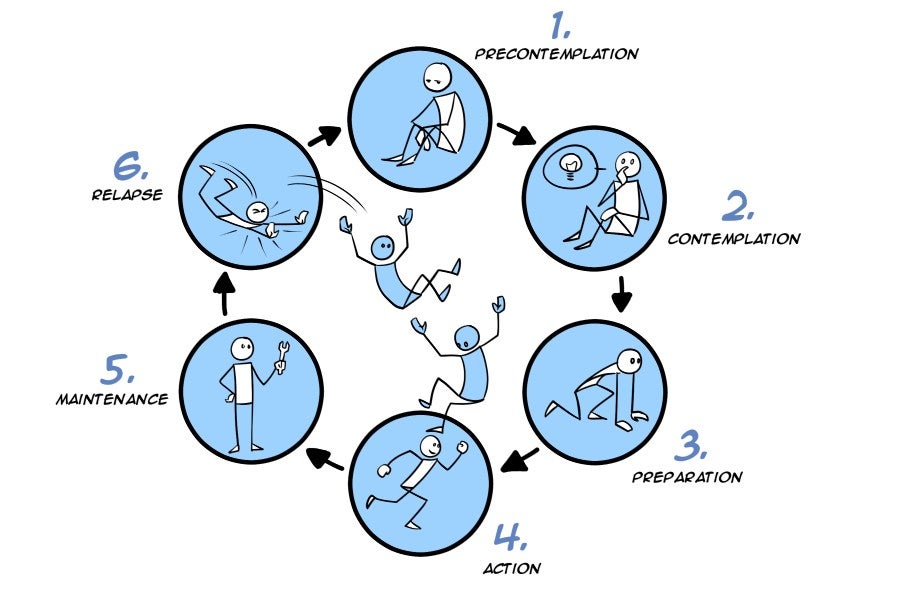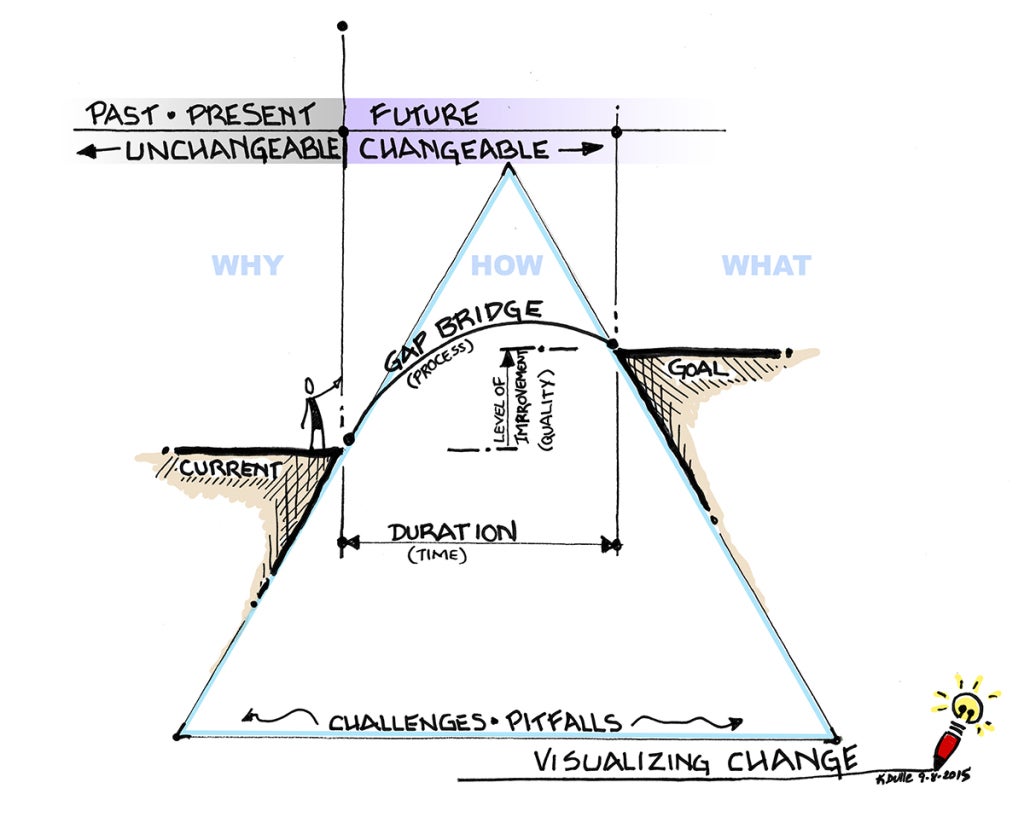Value-First Storytelling

Last week we talked about change curves and took a moment to recognize that important change goes through a cycle just like grief. In fact, if you took a moment to glance at the Kubler-Ross Change Curve you might have noticed it looked pretty dang familiar to you. The five stages of change happen to be, you guessed it, the exact same five stages of grief! It’s true: Our minds grieve change even when it’s good. A big breakup still hurts even if we know it’s time to move on.
Understanding that letting go of the way we did things is a process, even if the way we did things wasn’t serving us, helps us prepare for the ride and know when we need to act vs when we simply need to hold on. Knowing that stakeholders’ fear, anxiety, anger, frustration, and helplessness are to be expected, we can see those reactions as a sign that we are on the right track when we are managing the change appropriately.
That doesn’t mean we should let go of the wheel, of course. What we can do to successfully set our organization up for the change ahead, the “unfreeze” stage of the Kurt Lewin Change Model, is to prepare our organization by:
+ Framing the problem and breaking down the status quo. This stage includes challenging the beliefs, values, attitudes, and behaviors that currently define the problem and being willing to look at the biases that enabled us to land here in the past. Using the analogy of a building, we must examine and be prepared to change the existing foundations as they might not support new additions. This may evoke strong reactions in people, and that’s exactly what needs to be done. We’re effectively creating a controlled crisis, which in turn can build a strong motivation to seek out a new equilibrium. Without this motivation, you won’t get the buy-in and participation necessary to effect meaningful change. Covid, of course, accelerated our first step- for better or for worse.
+ Communicating to our stakeholders why the status quo isn’t working and why we need the change. This might be especially hard when we’ve found ways to celebrate old policies/metrics that really weren’t serving us. This step requires a bit of honesty, humility, and an honest effort to change the narrative going forward. (Thankfully, those are all traits of a great leader and showing openness and vulnerability during change serves to deepen trust and respect.)
+ Soliciting feedback: Openly, honestly, anonymously, regularly and without repercussion. Whether it’s a conversation, a survey, a private suggestion box, town hall meetings or just picking up the phone to call individual staff members, the answer is YES. Make clear the only promise associated with the feedback is that it will be heard and the concern will be addressed.
+ Addressing, managing and responding to fears and…
+ Messaging, messaging, messaging and messaging some more about the gains made along the ride, not just at the end. The change cycle tells us there will be dips and losses along the way. Don’t let those expected setbacks become the narrative that keeps fears stoked.
When it comes to the community, tell your story through a service-oriented lens.
Abe Lincoln once said, “Give me six hours to cut down a tree and I’ll spend the first four sharpening the axe.”
You might feel like you’ve been messaging and talking about policy changes for 24 hours a day 7 days a week since March, 2020, but it’s easy for us to forget that our shelter world, the thing we live and breathe every single day, is a place, a service, that most people only interact with a few times in their lives. The most well-resourced shelters in the country with a team of marketers behind them are doing great to have an online following that’s 10% as large as the city or county they serve. Of those, less than 6% will see a post you make on social media. The point: Don’t be surprised to find your community is still surprised by the improvements you’ve made to your customer and animal experience. Expect that they have no idea what or why things are different and relish in the opportunity to tell them how you are realigning and expanding your services to meet their needs and the needs of the animals.
How do these changes directly benefit the animals? How do they benefit stakeholders?
● If you fumbled around for a few weeks testing new technologies that would allow your animals to meet their match online and now they’re out there swiping left with potential adopters– tell that story! Does every person visiting your website know they can meet their next best friend without getting off the couch?
● If you implemented an appointment-based system, whether it be for adoption or to surrender, tell your community what it means to be able to give your undivided attention to the pet and person sitting in front of you. Can they go online and schedule an appointment using a convenient calendaring app? Great! No one likes to wait, everyone likes clean surfaces, and, rest assured, every animal and adopter/guardian receives your team’s full attention when it’s their turn. Focused attention is the gold standard of good service, even more so when big decisions are being made.
● If you stopped taking in healthy cats, communicate why this change is in alignment with the recommendations made by leading national organizations. Most people simply don’t know that cats are ten times more likely to be reunited with their guardians when left in their neighborhood of origin.
● If you emptied your shelter to upgrade your cat housing, show your supporters what it looks like when a cat steps through a portal. We all understand how critical having adequate space to move around is to our wellbeing now more than ever.
This is our story of change and it’s a great one. The most recent Shelter Animals Count data shows us that euthanasia is down by at least 100k lives this year compared to last and animals are spending a record low number of nights in cages. If your organization is feeling weary, unappreciated, misunderstood, or even under attack, bless and release what is not yours to worry about and hand it over to the life cycle of grief so you can spend all your time and attention shouting the positive changes for both animals and the people that love them from the mountaintops.








Responses